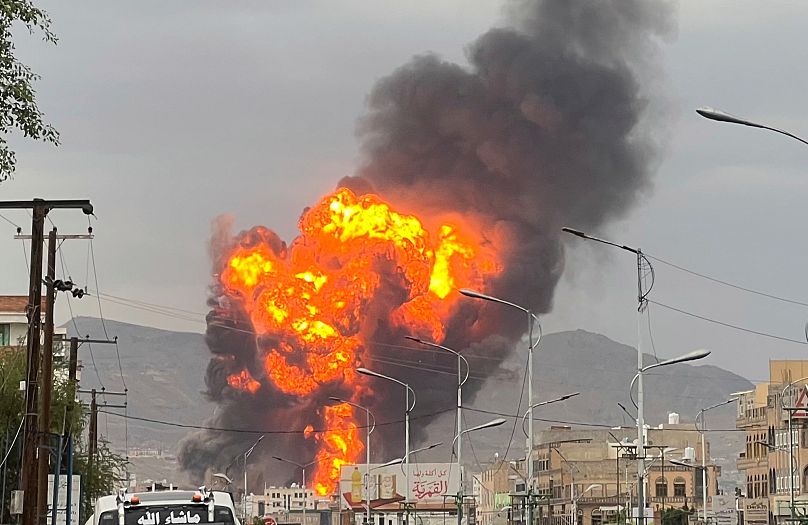Israeli Airstrikes in Yemen Target Houthi Sites, Killing 35
Israeli airstrikes on September 10, 2025, targeted Houthi-controlled sites in Yemen’s capital Sanaa, killing at least 35 people, including 31 journalists, in the deadliest attack on the press in 16 years.

Israeli airstrikes struck Houthi-controlled sites in Yemen’s capital, Sanaa, on September 10, 2025, resulting in the deaths of at least 35 people, including 31 journalists and media workers, according to the Houthi Health Ministry and multiple press freedom organizations. The attack, which targeted the headquarters of the Moral Guidance Directorate—the media arm of the Houthi-controlled government—also left 131 people wounded. The strikes occurred as staff at the army’s official newspaper, 26 September, were finalizing a weekly print edition, leading to a high casualty count among journalists and media support staff.
Targeting of Media Outlets and Civilian Impact
The Israeli military stated that the strikes were aimed at the Houthi public relations headquarters, which it accused of distributing propaganda and psychological terror in support of the Iranian-backed Houthi movement. The Houthi authorities, however, reported that the attack destroyed the printing presses and archives of the 26 September newspaper, as well as the offices of the Yemen newspaper, both located in the same complex. Among the dead was a child who had accompanied a journalist to work. The Committee to Protect Journalists (CPJ) described the incident as the deadliest single attack on the press since the 2009 Maguindanao massacre in the Philippines.
Nasser Al-Khadri, editor-in-chief of 26 September, condemned the strike as a “brutal and unjustified attack that targeted innocent people whose only crime was working in the media field, armed with nothing but their pens and words.” The Yemeni Journalists Syndicate and other press freedom groups stressed that several civilian journalists with no military affiliation were among those killed, raising concerns about violations of international law.
Broader Context and International Response
The Israeli airstrikes are part of a broader campaign against Houthi forces, who have launched repeated missile and drone attacks on Israel in support of Hamas during the ongoing war in Gaza. In addition to the loss of life, the strikes caused significant damage to cultural heritage sites, including Yemen’s National Museum, according to Houthi officials and local archaeologists. The museum, which houses tens of thousands of artifacts, suffered structural damage, raising fears of looting and further loss of Yemen’s cultural patrimony.
Human rights advocates and media watchdogs have condemned the targeting of media outlets, arguing that such actions are not justified under international law, even if the outlets are affiliated with military or political groups. The CPJ has classified the killings as deliberate targeting of journalists for their work, noting that Israel has been responsible for a significant proportion of journalist deaths globally in recent years.
The Israeli military has maintained that it does not target the media and that its strikes are directed at military objectives. However, the high civilian toll and destruction of media infrastructure have drawn international criticism and renewed calls for accountability and protection of journalists in conflict zones.
Aftermath and Ongoing Risks
The aftermath of the strikes has left Yemen’s media community reeling, with the destruction of printing presses and archives representing a significant blow to the country’s journalistic and historical record. The incident has also heightened concerns about the safety of journalists and the broader implications for press freedom in the region. As the conflict continues, the risk to civilians, cultural sites, and the free flow of information remains acute, underscoring the urgent need for adherence to international humanitarian law and protection of non-combatants.